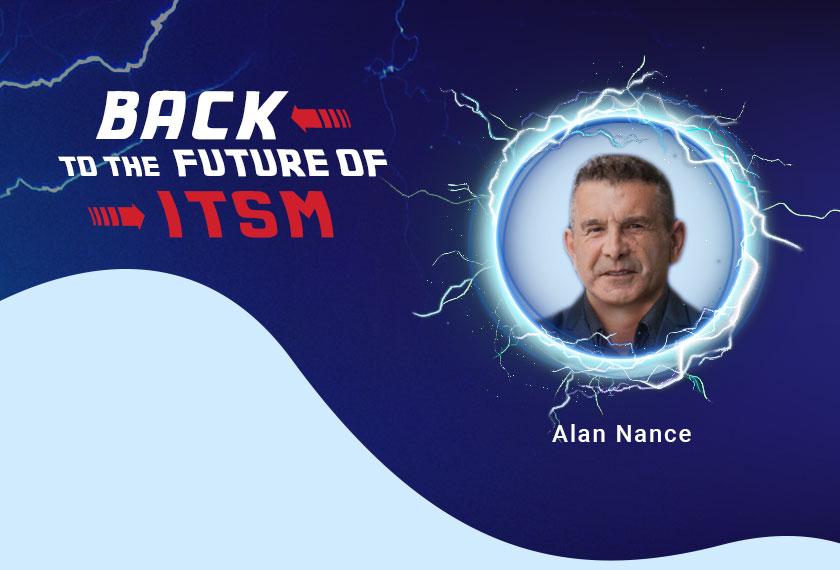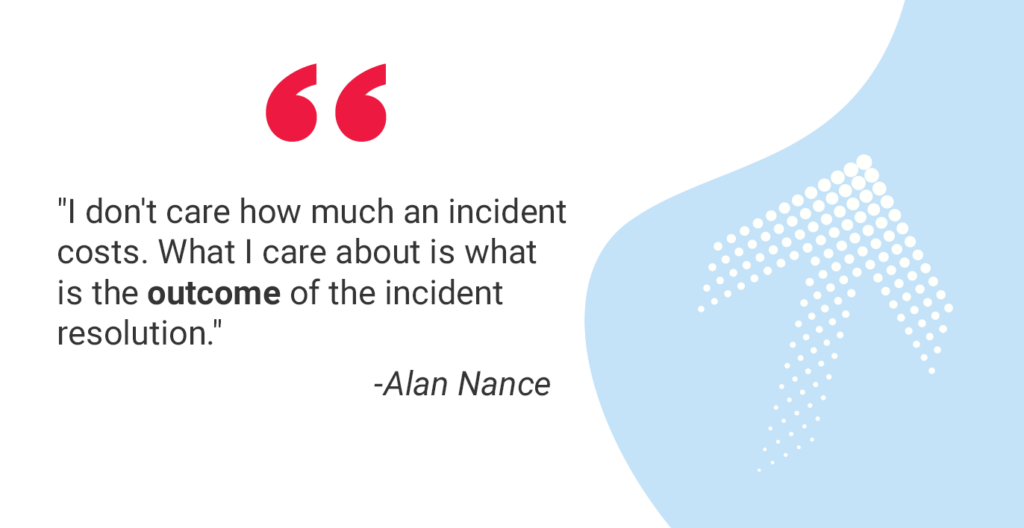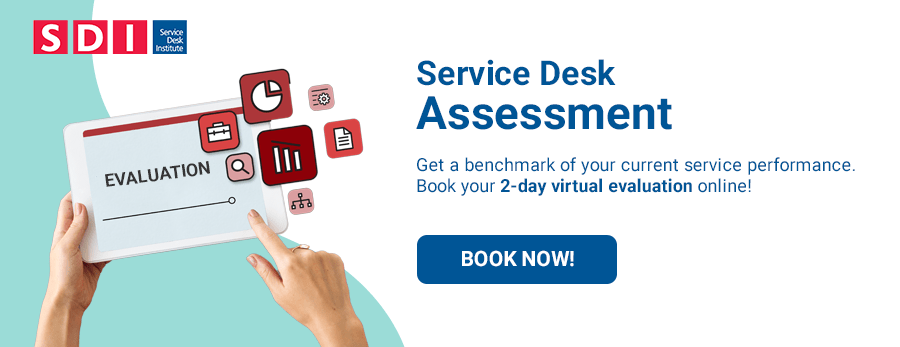
The focus for many organisations is shifting to a human-centric approach to IT services. Some of them collect and quantify data on it. On the other hand, some companies still don’t understand why a human-centric approach is so important.
In the second part of our blog series ‘Back to the Future of ITSM’, we spoke with Alan Nance, Co-Founder & President of XLA Collab.
Alan shared his views on the following:
- Why is shifting to a human-centric approach so important today?
- What is the key to developing long-term customer relationships and driving customer loyalty? How has this changed?
- What industry trends should we expect?
Customer Experience is About the Ultimate Beneficial Customer
Why is customer experience and shifting to a human-centric approach so important?
I would start by saying that we need to make a differentiation between employee, supplier, and customer experience.
When we talk about customers, for me, customer experience is really about the ultimate beneficial customer. And that’s a different world!
While many things are common between employees, suppliers, and customers, there are significant differences. So, we have to measure them in different ways.
When you’re an employee or when you’ve got employees, it’s much easier to gather information, influence them, and to communicate with them than it is to do that with a customer that you may not know very well, depending on the type of business that you’re in.
CX people are traditionally not very good at customer experience because they overly rely on survey tools like Survey Monkeys. The replies are often rarely useful in understanding why a customer says what they say and what to do about it.
Traditionally, there is very little return on investment coming out of customer experience the way it’s done today.
Why experience and why now?
One of the things I always talk about, you may have seen it elsewhere, is the transition from the service economy to the experience economy. It isn’t always obvious that we’re in this moment of transition from one economy to the other; you often only see that later on.
So, when you are in the moment, there’s this huge battle between people who have grown up in, and all their knowledge and management skills are based on a sunsetting economy. Computer services, outsourcing services, and service management were built at the end of the 1980s and at the beginning of the 1990s.
So, the moment everybody realised they were moving into a service economy, it had actually been happening for about 10 years before that. It’s the same now with the move to the transition to the experience economy.
And the other thing is that when you go from one economy to another, the sunsetting economy doesn’t just go away.
It’s not like we still don’t have aspects of the agricultural, industrial or service economies or service economics, right? So, what generally happens is that the new economy assimilates everything from the old one.
So, we still have metrics like return on investment, even though it’s very much a capitalist measurement from the industrial age, but we still use it today.
In the year 2000, you start to see a change. From that time, we started to shift to the experience economy, where people can take control of their lives. They can run their lives on an iPhone, a laptop, or a tablet. They’ve got the apps; they can do everything.
So, where we always used to have end users or a service relationship with end users, end users have since almost disappeared, and it’s now more about the human experience of technology without barriers rather than being an end user of someone else’s stuff.
This human-centric has two flavours
In the experience economy, there are no end users anymore because they are all producing and contributing information. They’re all developing information themselves. For instance, they’re in a DevOps team, they are in data teams, and they are citizen developers. They’re creating designs and have their own systems to do it.
Whereas service either works, doesn’t work or is in some degraded state; Human centricity is nearly always on a continuum.
An example is hybrid working. I hear see people saying hybrid is three days a week in the office and two days a week at home. Or Hybrid is working from home. And that’s not what it is. Hybrid isn’t a noun; it is a verb or an adjective.
Hybrid is not a binary state, it is a way of getting things done. It’s a flexible way, and it’s a continual way.
In fact, in the experience economy, people are going to define what hybrid means, not organisations.
Why do you think Quiet Quitting and the Great Resignation became so popular this year?
I think that people associated quiet quitting with the pandemic. The facts (Gallop surveys) show that people have been quiet quitting for at least a decade.
This is nothing new. It’s popular today because people are rediscovering symptoms. If they’re talking about the Great Resignation or the Great Retain, then they haven’t really understood that this is not something that’s due to the pandemic. It’s not due to Gen Z.
It’s probably not even got something to do with the experience economy, but the experience economy accelerates and makes those things more important.
Quiet Quitting or active quitting is something that will be with us for the next 10 years until something else comes along, 10 or 15 years. That’s why I believe that the art, or science of experience, is a big thing. It’s not just about fixing retention; it’s not just about work-life balance.
It’s about a whole bunch of things, and technology is part of it.
But again, I think people are focusing on symptoms rather than the whole, the whole issue because Quiet Quitting is also about power and opportunity.

Is the Great Resignation going to slow down?
The Great Resignation thing is going to die because of the high inflation, high energy costs and unemployment. People aren’t going to be going anywhere unless they happen to be in a very scarce place. If you’re a data scientist, you’re always going to be able to move. But for most people, this great booming economy is simply going away.
In fact, many companies have created a time bomb for themselves. They treated a symptom with a structural change. By increasing wages to encourage retention, they will soon have people whom they no longer earn above-market wages.
They’re going to be able to get people cheaper, but they’ve tied themselves to these basic wages. Expect some of the employment in ‘at-will’ economies to be rotating the expensive employees out as the recession causes cheaper talent to become available.
We’re going to have a very, very difficult period November, December, January, February, and March.
The Customer Journey is Changing
What is the key to developing long-term customer relationships and driving customer loyalty? How has this changed in the last few years?
I think it’s changed dramatically. I think there are a couple of things that I learned in the cloud age.
In the service economy, the big focus was on service chains, supply chains, and service optimisation. We were encouraged to analyse our supply chains and look at the competing forces on a supply chain and optimise it. Which is why we had SAP, Oracle and then we had Salesforce.
These are all geared toward optimising your supply chain in the experience economy.
It’s not about your product; it’s not even about your service; it’s about the experience that you create for your employee, supplier, or customer.
This means that you have to create ecosystems that are outside of a supply chain. And companies are very, very uncomfortable with this. There are practical reasons like security, data privacy, and intellectual property.
But the real problem is that they think in a closed system structure. Therefore, service management is doomed in some way because service management is all about optimisation rather than caring about the human-centric experience.

So, all metrics are going to change!
The other thing that’s going to change is the customer journey because we create customer journeys the same way we create supply chains. Organisations have to realise that when you are on their journey, you could be on somebody else’s journey at the same time.
So, the next thing that comes out of all that is the difference between customisation and hyper-personalisation. This is going to be a huge theme in the experience economy.
Customisation really depends on your employees being engaged and observing what’s going on. You can’t just automate customisation, but your systems have to account for it.
We Still Have to Do the Brilliant Basics
How do you think experience management will change in the future? What industry trends should we expect?
We’re in the technology industry, so obviously, technology platforms are very important. But we have got to find better ways of making technology an enabler of the employee experience. Unless we are in a totally B2C market that has no employees sitting in it, and I don’t know how many of those organisations there really are, we’re going to have to find some way of bringing the employee experience into that customer experience. That’s one thing.
Secondly, we still have to do the brilliant basics, which are things like incident management, problem management, change management, configuration, communications, and planning.
All those things have to be good. Otherwise, even a great human-centric experience that you build on those basics isn’t going to work.
About the author:
Alan Nance is a Co-Founder & President of XLA Collab. Alan is an accomplished technology leader focused on Experience Management and specifically XLAs.



























